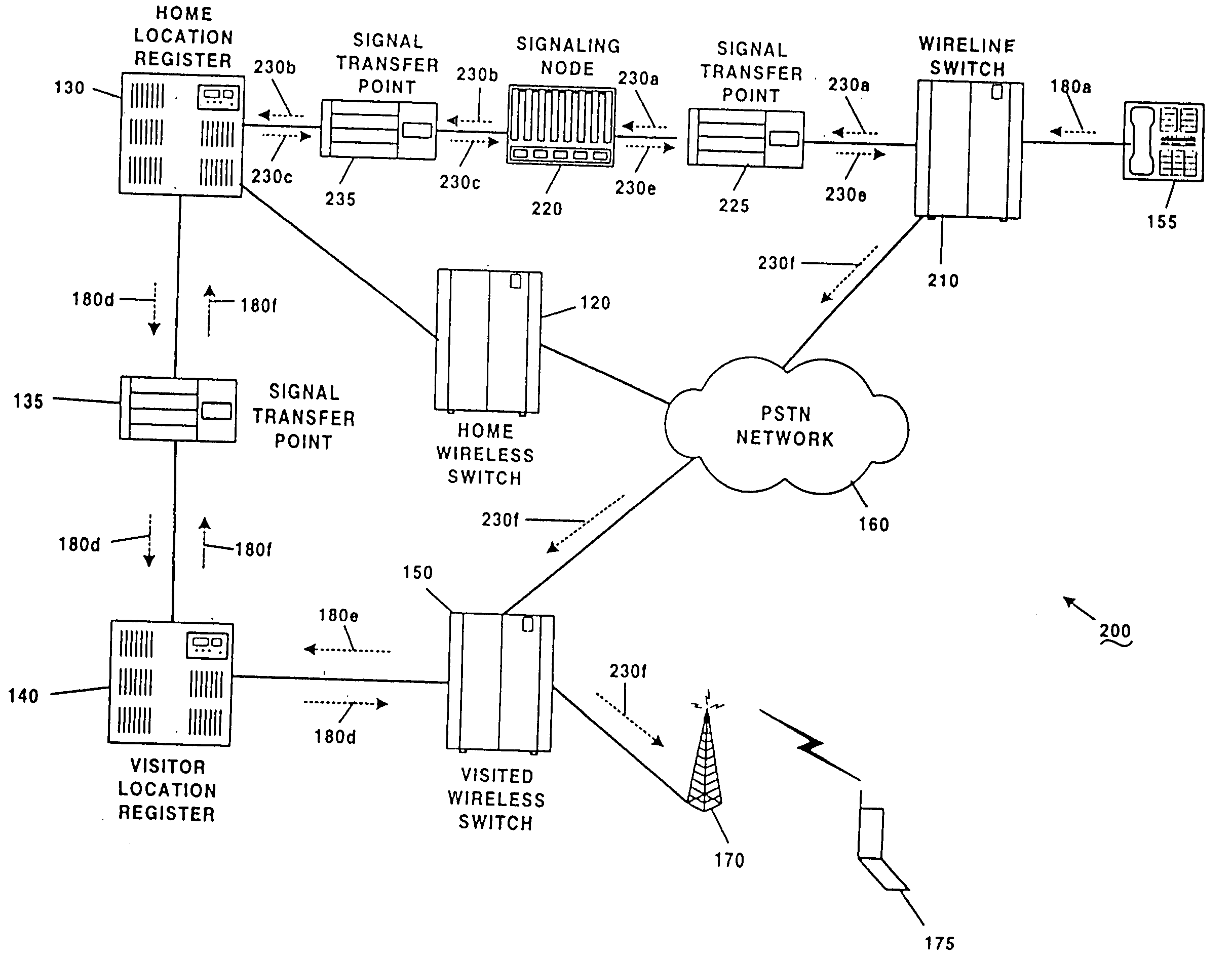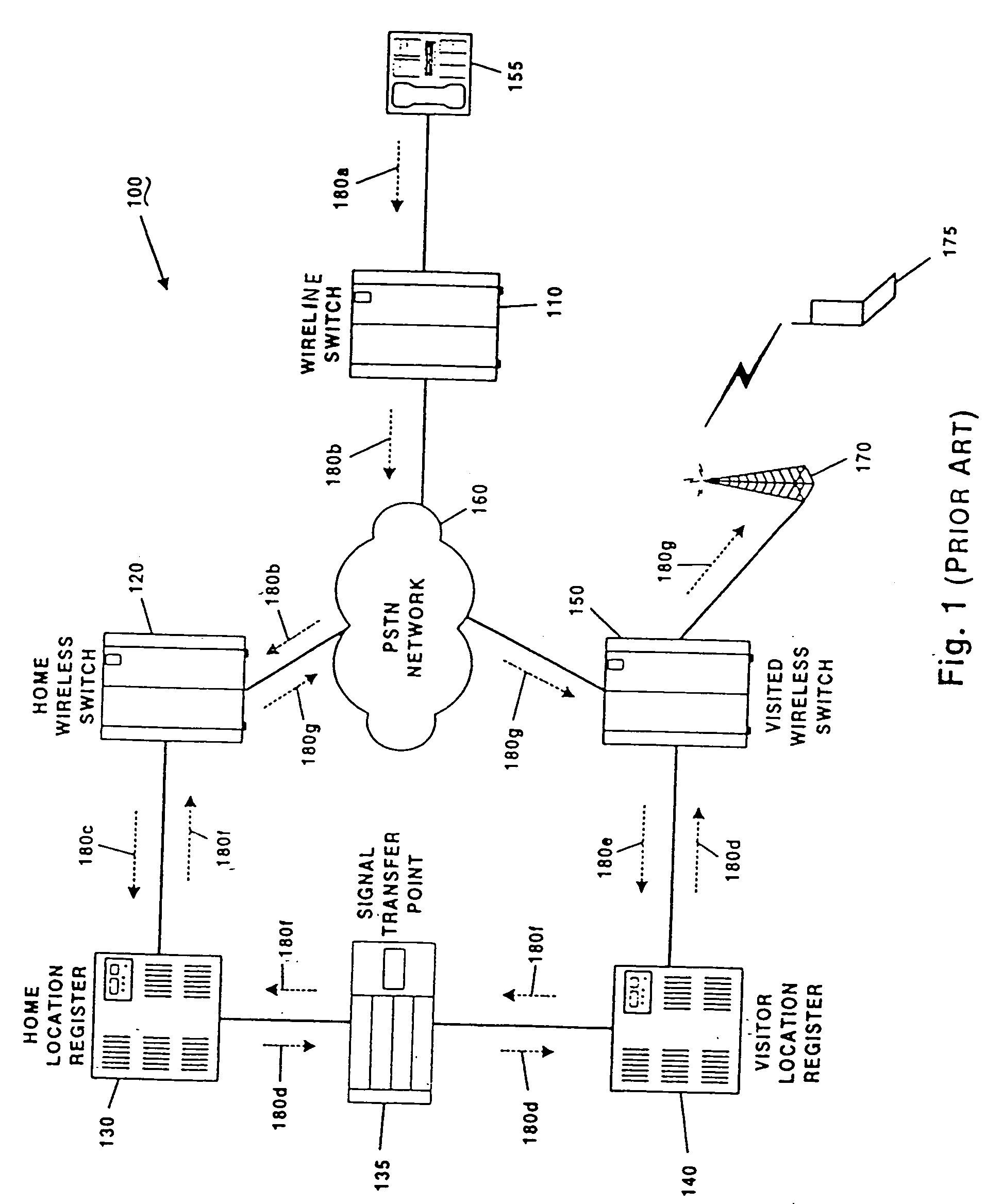Wireless mobile call location and delivery for non-geographic numbers
a non-geographic number and mobile phone technology, applied in the field of telecommunication networks, can solve the problems of reducing the capacity of the telecommunication network, its efficiency, and the conventional method of routing land-to-mobile calls, and achieve the effect of increasing network capacity and efficiency, and reducing the number of connections
- Summary
- Abstract
- Description
- Claims
- Application Information
AI Technical Summary
Benefits of technology
Problems solved by technology
Method used
Image
Examples
Embodiment Construction
[0038] The following description of embodiments of this invention refers to the accompanying drawings. Where appropriate, the same reference numbers in different drawings refer to the same or similar elements.
[0039] Methods and systems consistent with the present invention establish a single connection in a telecommunications network when connecting calls to wireless directory numbers (DNs) regardless-of whether the associated wireless stations are within or outside of their respective home areas. In one embodiment, when a call is directed to a wireless DN, a wireline switch in the network identifies a signaling node associated with the wireless DN and sends the identified signaling node a request for a route to the wireless DN. If the wireless station associated with wireless DN is outside of its home area and is served by a visited node in the network, the signaling node determines a route that excludes the home node associated with the wireless DN and returns a temporary local d...
PUM
 Login to View More
Login to View More Abstract
Description
Claims
Application Information
 Login to View More
Login to View More - R&D
- Intellectual Property
- Life Sciences
- Materials
- Tech Scout
- Unparalleled Data Quality
- Higher Quality Content
- 60% Fewer Hallucinations
Browse by: Latest US Patents, China's latest patents, Technical Efficacy Thesaurus, Application Domain, Technology Topic, Popular Technical Reports.
© 2025 PatSnap. All rights reserved.Legal|Privacy policy|Modern Slavery Act Transparency Statement|Sitemap|About US| Contact US: help@patsnap.com



